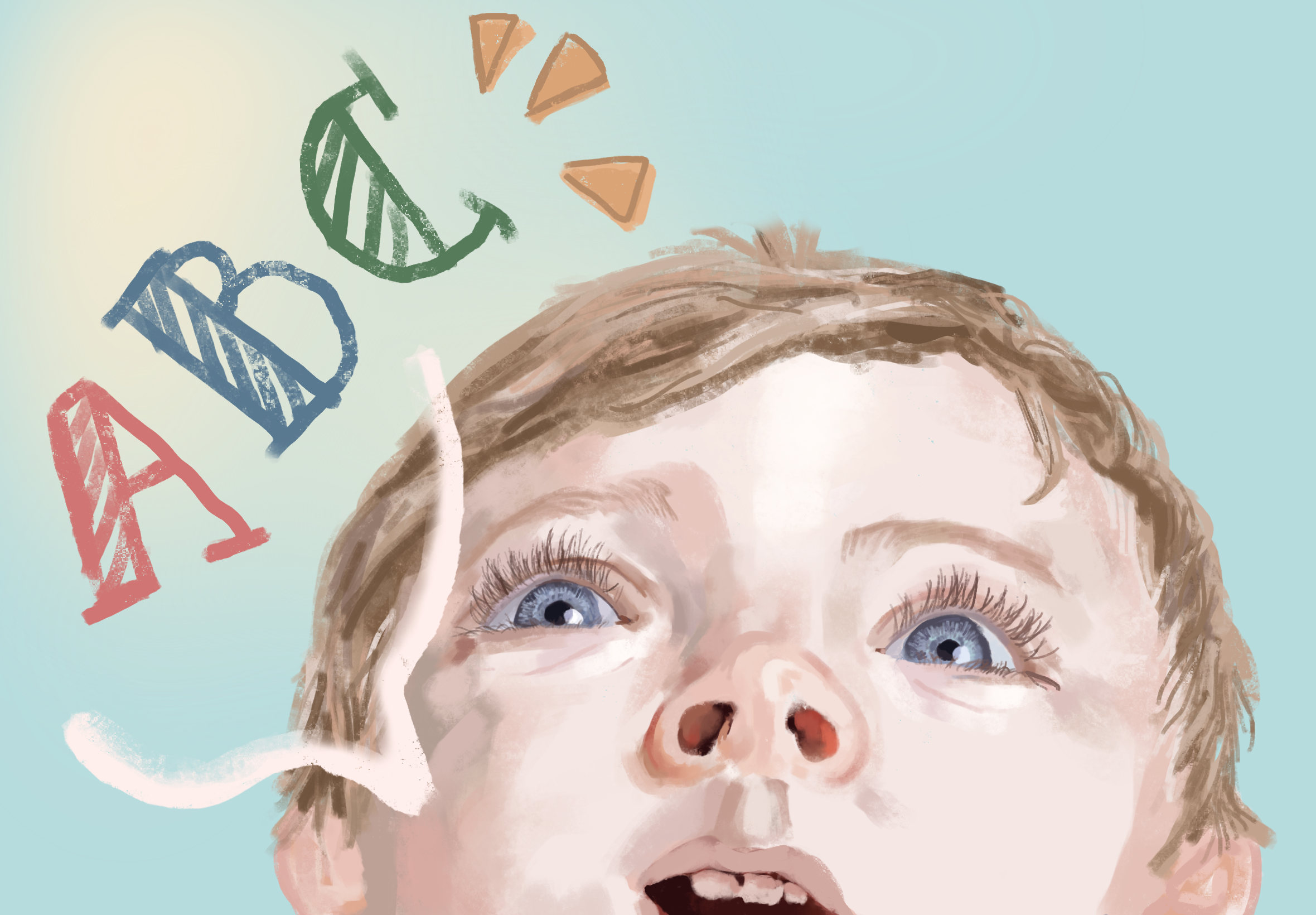Unlocking Communication
Unique Pathways, Challenges, and Strengths in Language Acquisition in Children with Autism
Written by: Morgan Nguyen | Edited by: Monna Wei | Graphic by: Ziona Somy
Learning language for children on the autism spectrum is very unique, and it varies significantly from neurotypical development. Autism Spectrum Disorder (ASD) is characterized by differences in social communication, sensory processing, and learning styles. All of these have major impacts on how children develop language skills that allow them to perceive the world around them.
Children with autism often experience challenges in social communication, which can impact their language development. Unlike neurotypical children, they may have difficulty with nonverbal cues, such as eye contact, facial expressions, and gestures, which make up a large portion of communication. This makes reciprocal communication, where both parties take turns speaking and listening, particularly challenging. While a majority of children with autism can develop spoken language, others might remain nonverbal or have limited verbal skills.
These children often have difficulty understanding the pragmatics of language, which includes using language appropriately in different social contexts. For example, a child may struggle with conversational turn-taking, such as knowing when it is their turn to speak, or using greetings, both of which are often learned through social interaction.
Despite these challenges, children with autism often have a deep interest in specific topics or activities that can become a powerful gateway for verbal communication. A child who is nonverbal may still use other forms of communication, including gestures, pictures, or even echolalia, which is defined as repeating words or phrases. Recognizing these alternative communication behaviors is essential for creating meaningful and mindful interactions.
Another key difference in language acquisition for children with autism is the role of sensory processing issues. Children with autism can be over-responsive or under-responsive to sensory stimuli, affecting their ability to focus on verbal communication. For example, a child who is overwhelmed by loud noises or bright lights may struggle to engage in conversation or follow verbal instructions. Sensitivity to sensory processing can lead to stress and distraction, and this makes it difficult for children to process spoken language effectively. On the other hand, some children with ASD might show a preference for specific sensory experiences, such as enjoying certain sounds, textures, or visual stimuli. These preferences can be utilized to create engaging and personalized learning experiences that help support the child’s language development.
One tool that has been proven to be effective for many children with ASD is Augmentative and Alternative Communication (AAC). At its core, AAC encompasses a wide range of strategies to help with language acquisition and development, one type being no-tech/low-tech options like writing, drawing, spelling out words, or pointing to photos. A significantly powerful low-tech AAC technique called the Picture Exchange Communication System, or PECS, uses pictures to parallel the meaning of desired items in exchange for the use of words, allowing for back-and-forth communication.
According to the Children’s Hospital of Philadelphia, AAC can improve communication skills in children with autism by providing them with a way to communicate effectively without it being frustrating for them. AAC systems also allow children to learn new vocabulary and sentence structures, both of which can contribute to the development of their spoken language over time. For some children, using AAC can help bridge the gap in their communication until they are able to use spoken language or even develop more advanced communication skills.
The path to language acquisition for children with autism is oftentimes non-linear, and it is filled with unique challenges. However, it is also filled with many opportunities for growth. By analyzing the impact of social communication differences, sensory processing issues, and individual learning styles, combined with Augmentative and Alternative Communication (AAC), there are many effective strategies to help support language development.
These articles are not intended to serve as medical advice. If you have specific medical concerns, please reach out to your provider.

